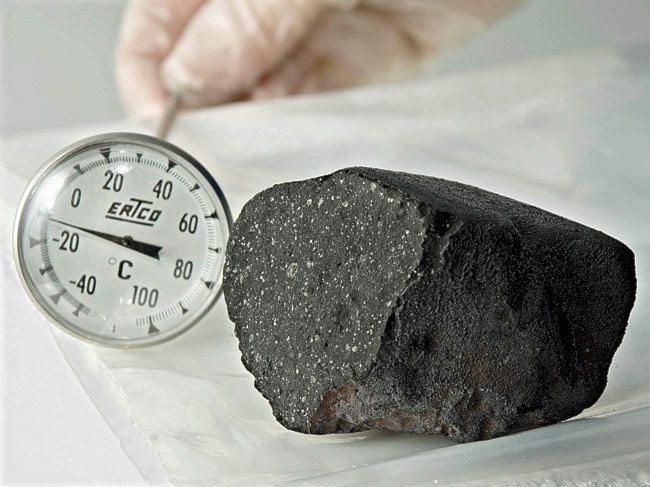The Tagish meteorite is offering up new clues to life’s origins.
The rock, which resembles a big hunk of charcoal, fell from space in a blaze in January of 2000, slamming into the frozen surface of Tagish Lake, on the northern edge of British Columbia, near Atlin.
Bits of the meteorite eventually made their way into the hands of Chris Herd, a planetary geologist at the University of Alberta.
This month, in an article published in the journal Science, Herd helps firm-up the notion the building blocks of life were brought to Earth by a meteorite like the one found on Tagish Lake.
And Herd offered a fresh twist: not only was the space-rock rich with amino acids and other important precursors to life, but it appears that this organic matter formed on the asteroid itself.
Previously, it had been presumed that space rocks delivered organic matter to Earth, but that this stuff had been created elsewhere. Now it appears asteroids serve as incubators of sorts.
“You probably had even more primitive, precursor stuff out in space that got dumped, with ice and rock, into the asteroid,” said Herd.
Heat from the sun caused ice aboard the asteroid to melt “and percolate through,” said Herd, “and cooks these things up from the raw ingredients. Then it gets delivered to the Earth, four billion years ago, and it adds to the soup that’s needed for life.”
Herd found evidence each step of this cooking process in the meteorite, based on different levels of amino and monocarboxylic acids.
“These two things are important to life,” said Herd. “They’re not life itself, but they’re precursors, building blocks, to life as we know it.”
The Tagish meteorite is believed to be 4.5 billion years old. That puts its creation “way back at the beginning of the solar system,” said Herd.
He hails the rock as “the world’s most pristine meteorite.”
That’s in part thanks to the frosty landing spot, and in part thanks to Jim Brook, who recovered the rock, taking care to never touch it with his bare hands, lest he contaminate the samples.
Contact John Thompson at johnt@yukon-news.com.
